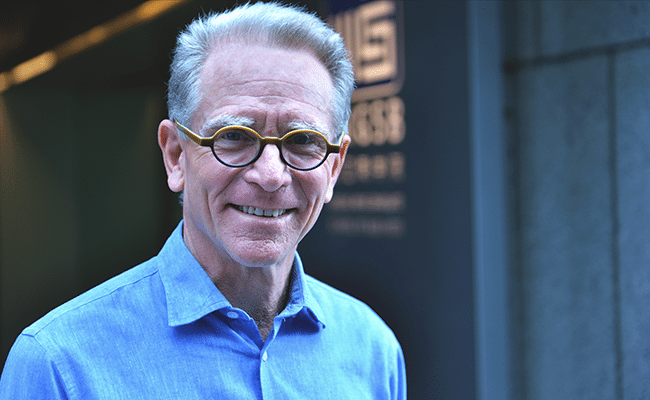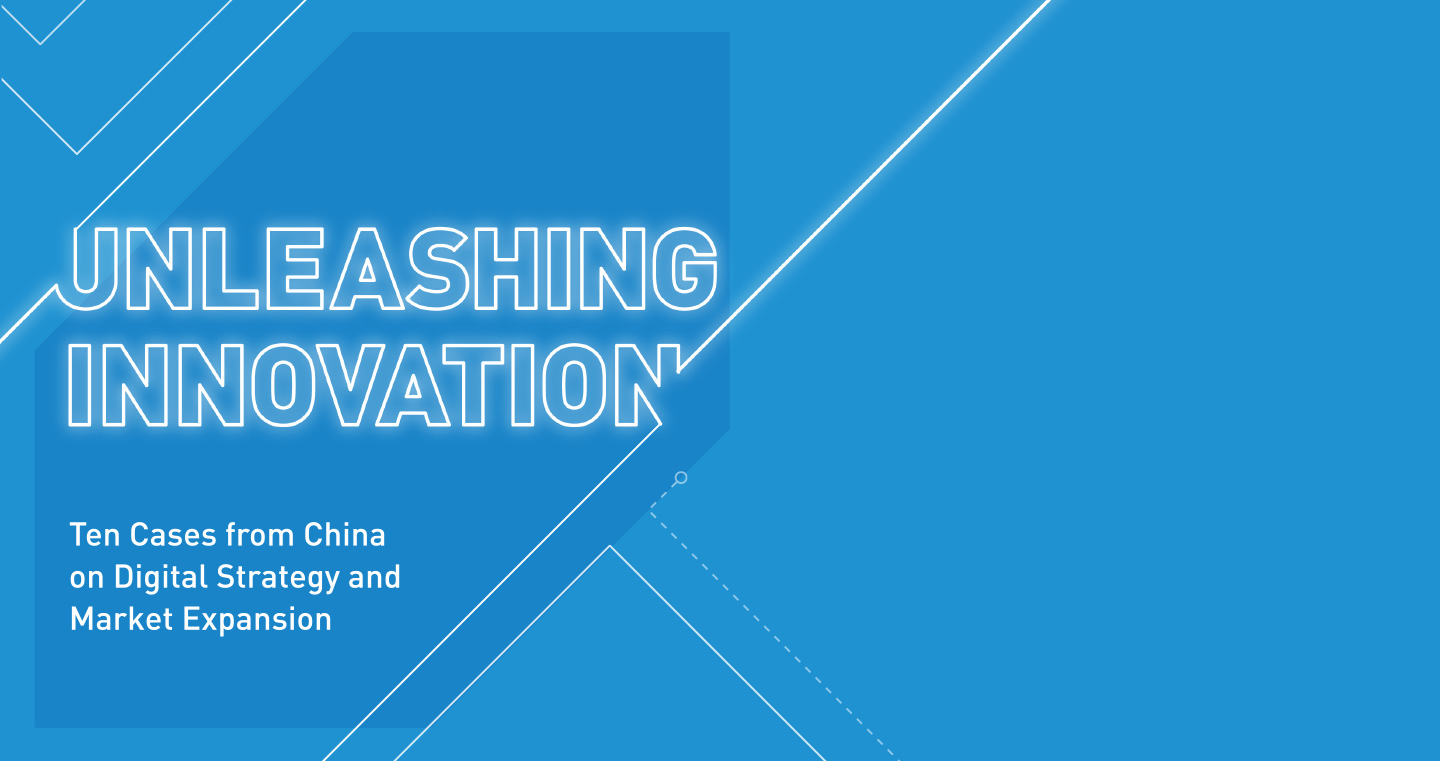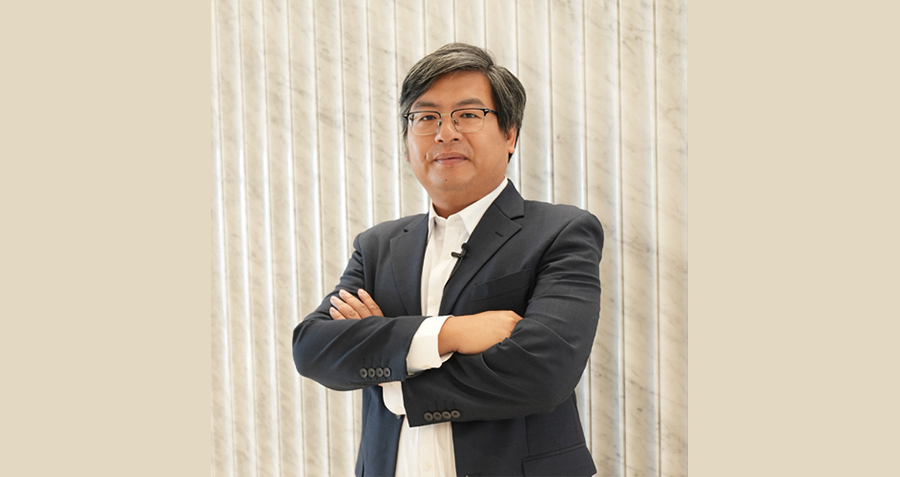For the last few years, companies across the world have been obsessing over ‘design thinking’ to solve complex problems. Design thinking, as the name suggests, derives its basic principles from the discipline of design. Unlike most previous problem-solving approaches, it is human-centric, collaborative and driven by experimentation. Many companies, such as consumer products giant Procter & Gamble, GE Healthcare and Philips Lighting have adopted design thinking processes.
Yet as a concept, design thinking is hard to understand, and even harder to implement. Implementing design thinking often requires rewiring the organization, which is set in the old ways of going about its business. During a recent visit to Beijing, Clark Kellogg, a “recovering architect” turned design thinker, helped unravel the many mysteries of design thinking and its implementation in this interview.
Kellogg, a partner in San Francisco Bay Area-based consultancy, Collective Invention, teaches design and design thinking at UC Berkeley in both the College of Environmental Design as well as the Haas School of Business. He is a director of the Spark Design Awards.
Excerpts:
Q. We have heard all kinds of definitions for design thinking. To your mind, what is design thinking all about? Why has it become so popular?
A. Design thinking at its core, I like to think, is simply an application of advanced common sense. At its core, design thinking is a different way of looking at problems, understanding problems and then going about solving them. The alternative to a linear thinking process that is taught in analytic business systems is one in which we are using simultaneous thinking and more broadly based thinking, generating many more alternative solutions for evaluation. And doing so without all the rigid linear thinking processes. Design thinking is no better nor worse than any other kind of problem solving framework, it’s just a different one–a new toolset.
Why has design thinking become popular? It is because the nature of problems companies and societies are facing has become so complex that the prior ways of looking at problems has been outstripped by the complexity of current issues. And so we can’t tackle things like global warming, clean air, fresh water, economic interoperability and data avalanches the way we have been solving problems in the past. We call these ‘hairball problems’ or ‘wicked problems’. They are so complicated, so filled with ambiguity and so many indeterminate parts of the equation that we need to look at them from a different perspective. Design thinking offers us one tool to approach problems in a more holistic way.
Q. In what ways is design thinking different from linear thinking?
A. One of the reasons that this is named design thinking is that it has come out of the discipline of design. It isn’t design–it’s using the methodologies of design to solve problems. Some of the key elements of design thinking–there are some strange ones and there are some very straightforward ones. Comfort with ambiguity is one of the major ones. What we know and what we learn from any professional design discipline are things like visual literacy and the capacity to be more comfortable with ambiguity. By that I mean that all problems don’t have to be neatly and tightly wrapped up and resolved rapidly. Instead there’s a broader acceptance and comfort level with simply not knowing.
Another element of design thinking is to be more empathetic and more curious about the nature of problems. And being able to defer judgment about ideas as they come along.
Another element of design thinking that we have extracted from the design profession is a spirit of optimism. One of the things that is an element that isn’t often spoken about is, when you ask designers, ‘Why are you in this business? Did you come into this business because you wanted to create ill will in the world or to make the world a worse place?’ No, there’s a sense that, in fact, we can make things better through this kind of work. So there’s a spirit of optimism about design and design thinking that helps to keep ideas fresh and the search for new ideas going forward.
Q. You mentioned ‘hairball problems’ which I really think is a problem of our generation. Things are not so clearly defined any more. So, when we talk of tackling these problems through design thinking, how do we really start? How do we frame the problem, which is messy and not clearly defined?
A. That’s such an interesting point because if we can’t understand the problem, two things will happen. One is we will simply make the problem fit our solution, and if we can’t do that, we will reframe the problem in a way that may or may not be an accurate reframing. By using a design thinking approach to hairball problems, we go into it recognizing there is a certain amount of complexity that we don’t understand. At the heart of this is the unembarrassed recognition that we really don’t yet know the answer. Moreover, we don’t even really know the question. We spend more than half of our energies in the innovation cycle on understanding the question. If you get the question right, the answer is easy. Too often, in our rush to solve, we don’t spend enough time figuring out what it is we need to be asking. We call this part ‘problem finding’, and then ‘problem solving’.
There’s an old saying: ‘If all you have is a hammer, then everything looks like a nail.’ And so it is with these hairball problems. Too often faced with them we reduce the problem to something on a smaller scale with less complexity–something we can get our arms around and then easily solve. Of course, we are then solving the wrong problem, and typically, we’re solving at too low of an altitude. So we are creating a solution oftentimes with unintended consequences. That solves a short-term problem but doesn’t address the underlying, larger scale issues. We have a strategy called ‘The Five Whys’. It is the sequence of asking ‘why?’ about a problem five times. By the end of that fifth ‘why?’ you are typically at what we call a root cause. And so by peeling back the layers of the question to a deeper level, we usually find that the real issue is something quite different than the outside layer of the onion.
(Watch the accompanying video below)
Q. Can you give an example of such a hairball problem and how the right question was arrived at?
A. I’d like to give you an example of a problem that we have yet to solve. In the US, we have gasoline mileage standards for the automobile makers. So on average your fleet of cars must have 34.5 miles per gallon gasoline consumption. Every time that number is raised, of course all the automobile makers say that it’s impossible to do, and then go and do it. So we are incrementally solving an issue of gasoline consumption.
The reframe on this is even if we get to 80 miles per gallon of gasoline mileage, we’re still using gasoline. So the reframe in this case is not so much how can we get more mileage per gallon of gasoline. It is, how can we get people from point A to point B with the lowest possible use of energy that does not include petroleum. That question has the potential to remove cars altogether from the equation. It has the potential to ask a fundamentally different question, which is: ‘How do people get from point A to point B?’, and a subset question of ‘Do they in fact need to get from point A to point B?’ And a subset question from that might be: ‘And how do we get them to do what they need to do without going from point A to point B?’
This sequence of thinking might take us to a very different question that’s far beyond the short-term issue of how we can squeeze more miles out of a gallon of petroleum. Because no matter how many miles we get, we are still warming the earth.
Q. Are there defined stages of execution of a problem in design thinking?
A. It’s essentially a four-stage process of understanding the problem and then solving it. The first stage is observation, which is a lot to do with the understanding piece. We do ethnographic fieldwork. We interview and observe users in the setting in which the problem we are working on is situated. We then move to a second phase of insight where we take advantage of lots of different interviews and data and knowledge and seek patterns and seek new meanings and new understandings about that information. And essentially we are then able to state the problem.
Once stated, we then go into a phase of ideation. A broad search for ideas for solutions, and there are principles we use during that phase to generate as many ideas as possible. The fourth phase in this process is experimentation and testing. And so we start at the beginning with deeply observing and understanding, finding insights and deeper meaning in that question, stating that question and then heading into a phase of ideation where we have as many potential solutions as possible. By analytic process we choose one or two that we think are the best and then through the processes of prototyping, storytelling and testing, improve those and get them to a spot where they are ready for a higher level testing and implementation study.
Q. What is the role of consumers in this process?
A. There are two ways to think about this. One is the consumer as a reflector of preference; ‘I like A over B’ or ‘I like this feature and I don’t like that feature’. That’s a useful level of insight, often generated through focus groups or polling or survey. But our work within this realm is less about preference and more about unmet need or unmet opportunity. And so by doing a deeper level of insight work, that is, observation, interview and being with people for extended periods of time and understanding much more about the nature of their activity and their relationship with an issue or a product or a service, we’re able to interestingly generate through that process and identify 90% of user needs with as few as a dozen interviews.
That’s radically different to the era of ‘Big Data’ in which we’re analyzing literally millions of responses, quantitative ones, and looking at patterns in that data. That, however, is retrospective work. It is looking at what has happened. The idea behind the forward work of ethnography and observation fieldwork is to find the things that haven’t happened but in essence need to happen or want to happen. That’s a fundamental difference.
Q. What about companies that have implemented design thinking successfully–traditional companies such as Procter & Gamble that are known to now be good at it? How did they make that transition–you have established processes and systems and ways of looking at things and now you just change it?
A. Procter & Gamble is the poster child of observation because it’s the largest packaged goods company, and under [CEO] A.G. Lafley, who was brought out of retirement this year to re-take the helm of that company, they have a marvelous discipline of observation, listening and learning from customers. One is hard pressed to simply issue a dictum from the corner office that says, ‘We are now an innovation company’, because the keys to success to making this work are not policy–they are culture change. And in order to enable that culture change there needs to be leadership from the top, which is why Mr. Lafley has been so successful at it. There needs to be a broad acceptance of the differences between an innovation cycle or a development cycle or a marketing cycle. Part of this has to do with time.
When I was asked to build an innovation capability inside a financial services company, a Fortune 500, the only way we survived as long as we did is we had the direct support of the CEO at every stage of our development. Because in building an innovation capability inside a company that doesn’t have one, you are up against tissue rejection, resentment around your budget, no clear major ability in the traditional methodologies of success and a great demand to get stuff done fast that is by far and way better than anything else going on. It is sort of like a rookie baseball player coming up into the big leagues and being required to hit a home run his first time at bat.
Nevertheless, those are the kinds of forces that do come into play when a company is trying to do that. Why is this? Because humans don’t like to change. And so we have lots of conflict in companies when they try to do this work. No company suddenly (turns) the switch on and they are an innovation company unless they are built that way from day one. Procter & Gamble is a good example, Apple is a good example.
There’s a software company in Silicon Valley called Intuit that went through a really interesting transformation into an innovation-based company based on a failure story. They were losing market share and about to lose all relevance, and their wise CEO said they needed to make some kind of change and found this as a potential solution. If you work at Intuit today, you are trained to take the D4D–the ‘Design for Delight’ process–which is all the processes we are talking about. The entire company is sharing a thought process and thinking tools processes. And so at Intuit, or at P&G, or at Apple, or at similar companies, innovation thinking is the lingua franca, the water they drink every day. It’s not weird–it’s business as usual.
Q. Right. There are of course issues in how to institutionalize something like that. It’s one thing to get A.G. Lafley’s buy-in, and it’s another thing to have HR or finance or marketing to think on the same lines. So how do you really go about doing that, to make sure it goes across the organization, across functions and departments?
A. That in itself is a hairball problem. The conditions that help a company make that transition–fear is really great. If they are losing market share or they are engaged in some recognition of something not working, i.e., fear of failure. You know there’s an old saying, ‘any port in a storm.’ When faced with disaster or failure, companies often turn to the things that they would not think of before when everyone was fine and everyone was making money.
Hurricane Katrina is a really interesting example of that where suddenly New Orleans had to reinvent itself in dire circumstances. The president of Tulane University in New Orleans confided in me once that Katrina was the best thing that ever happened to their university because it so altered the orthodoxies, the status quo, the way they always did business, that he was able, because of the chaos and destruction of Katrina, to reinvent that school almost from the ground up. [He was able to do this] in new ways because there was no alternative to sustaining the old ways that weren’t working very well.
And that story, if you are able to take this extreme case, grafted onto companies of all kinds that are being outcompeted or losing market share or are creating products that are at best copycat products and so what they are doing is creating a pathway to the bottom of the chain because they are commoditizing the marketplace and their products in it. All of these are circumstances in which companies have opportunities to change the way they do business and to find new, more relevant ways to connect to consumers and to their needs. And through that process of slow reeducation and unlearning and then relearning, companies are able to make that transition.
There are a handful of strategies for companies that decide ‘we want to embrace a broader spectrum tool’. One of them is to build what is called a ‘skunk work’, a remote location in which you assemble a group of people and let them produce work under the protection of distance and then install it when it’s done. This is a strategy I used in building an innovation function for a financial services company. We built it in San Francisco. When it worked, it being innovative financial security products and communication, we would then take it to the home office that was on the East Coast and deploy it. Over time we migrated more and more of those services into the home office and when it was ‘safe’ we built quite a robust team there. So oftentimes the initial strategy is to take it offsite. If that isn’t the case it is to put in onsite, but have it very much be associated with key leadership.
Phil Knight [co-founder and Chairman] at Nike made a significant transformation of that company through the sheer force of his personality and leadership, but you don’t think of Nike anymore as a company that is struggling with becoming innovative. It’s very much in the DNA of that company. And so the ingredients tend to be unflappable leadership at the top and support, adequate budget to make a difference, an extended timeframe that doesn’t require bottom-line results every 90 days, and then a broad cultural change that does go into the areas of HR, operations, finance, marketing. If humans weren’t so change resistant, this would be really easy, but we are a change-resistant species.
Q. You mentioned skunk works. The dangers of having an operation like that are that you often run into resistence when you try and integrate it with the mothership later on. How do you go about countering that?
A. Not all companies are capable of doing this. This has been a hard lesson to learn. If you are in the commodities or manufacturing business, you may have no need to change or innovate. If your business is making facial tissues, you are fine. Just make more of it and distribute it well and package it, etc.
If you are in the business, however, of creating innovative products then you pretty much need to be an innovative company. The other alternative of course is to hire consultancies, and take the risk outside of your company. Of course, what we know as consultants is you’re always available to be fired, and therefore the problem gets removed. That’s part of what that business model is about. And so other times a company will partner with a consultancy, [which] in the course of doing work, will transfer skills inside. So you have in this strategy a gradual transfer of skill and technique inside. And then people can take it over and lead it from there. That’s one way it can work in some companies, but I really do want to stress that not everyone has to become an ‘innovationista‘. It’s quite possible to do fine in business without becoming a company that relies on new product sorts all the time.
3M is a company that requires by their charter they like to have at least 30% of their products less than two years old. Well that backfills into the culture of that company in a very powerful way. And if they abandon that strategy they wouldn’t be 3M.
Q. It’s interesting that you mention that it’s not important for everyone to be doing this. So is design thinking really suited for some industries, like say, the creative industries and manufacturing to an extent? Will it work in services? So are there some industries that should focus more on this?
A. In my opinion, no. It’s hard for me to think of an industry or process inside an industry that wouldn’t benefit from fresh thinking about how to do what they do in a way that is less expensive, faster, more efficient and delivers better benefits to consumers and profits to the bottom-line.
Q. It looks like design thinking will work better in cultures that encourage free thinking, like the US. But there are other cultures that have a more regimented way of thinking. How can you really implement this there?
A. That’s a question that we work with a lot. The US is always held up as this location, this country that is filled with free thinkers. It’s probably just as untrue as the generalization that China is filled with people that are only rigid thinkers. However, because most of those kinds of generalizations have some basis in truth, let me try to answer that.
In China there certainly are cultural factors that make it less comfortable for people here to pop up with new ideas, to stand out and to take risk. It is seen not so much as taking risk isn’t a good thing, but that failure is a disaster. In innovation we love failure, not because it means we have not succeeded in our work, because each time something doesn’t work we learn about what does work.
It is true that ‘failure’ is not punished in the US. It is certainly not punished in the poster child of innovation, Silicon Valley, where’s everyone is quite comfortable with the idea that if something doesn’t work, you try something else. And that’s why Silicon Valley is so celebrated as an innovation zone. Countries will take all the elements of Silicon Valley–the geography, the capital, the professional training, the network systems–and build them somewhere else, and then they are always surprised that it doesn’t work. Well, it’s no surprise to me that it doesn’t work because it’s not about the physical or the technical. It’s about the emotional human behavior that makes that difference.
So in China, for example, there is a lower tolerance for risk and certainly for what we would call failure. And it is beginning to dissolve, but it is by no means over. And this is going to be a challenge as China develops its capabilities in this area. We talk a lot about the difference between ‘Made in China’ and ‘Created in China’. Unfortunately, and I don’t mean this as a blanket statement, with respect to innovation the Chinese economy and Chinese companies have prospered so much with copycat work that it’s hard to think why we shouldn’t continue with that process.
But as the economy develops and matures and becomes much more of a global player, that phenomenon will simply drive profitability down because it will commoditize everything. And then if you are only competing on the basis of price or distribution, you have nowhere to go but faster distribution at lower profitability. That’s not how an economy wants to grow. And so the lessons of innovation and customer insight and meeting unmet customer needs may be a hard lesson to learn, but it is actually the process by which companies can grow and prosper and move their bottom-line up not the bottom-line down through commoditization.
It is a difficult cultural phenomenon, and because countries in Europe and in Asia are structured in a more hierarchical, authoritarian way it does make it more difficult to easily go through this process and not have all the cultural overlays of judgment on it. And the judgment problem is a big, big one. If we can learn to defer judgment, we are then able to let these ideas flourish a little bit more.




















